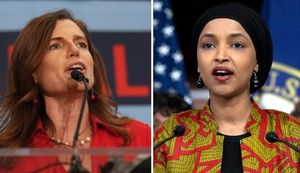Australia has made headlines recently by passing groundbreaking legislation to ban social media use for individuals under the age of 16. This audacious move caught the attention of the world as it not only marks Australia as the first country to enact such widespread restrictions but also ignites debate on the efficacy and practicality of such measures aimed at protecting children online.
The new law, which sailed through the Australian Parliament with bipartisan support, reflects growing concerns about the impact of social media on the mental health and well-being of younger audiences. By restricting access to platforms like TikTok, Instagram, and Facebook, lawmakers hope to address issues ranging from cyberbullying to addiction.
Yet, the plan to roll out these restrictions is already facing challenges. The law is slated to come fully online by the end of 2025, allowing social media companies time to adjust their practices. Fines for companies failing to protect users under 16 could be as steep as AUD 50 million (approximately USD 33 million), incentivizing compliance.
Public opinion appears somewhat divided. While many parents support measures to shield their children from social media's darker effects, critics have voiced concerns about potential overreach. Mental health experts warn of the unintended consequences of such measures, citing the need for balance. Social media platforms serve as significant spaces for connection and support, particularly for marginalized groups. A sudden ban could inadvertently push users to less safe corners of the internet, where they may feel even more isolated.
Adelle Williams, a mental health advocate, expressed worry over those young people who rely heavily on social media for support. “For many kids, social media is their lifeline. It’s where they connect with peers, seek help, and find community—cutting them off could do more harm than good,” she stated.
Lawmakers defend the ban as necessary, pointing to statistics and studies linking social media use to increased anxiety and depression among children. They argue such platforms can expose young users to harmful content, making it imperative to enforce stricter age verification processes. Yet, critics raise concerns over the practicalities involved. Can age verification be enforced without compromising privacy? And how effective will these measures be?
The detail of the law prohibits social media companies from mandatorily requiring government-issued identification for age verification. This raises questions about how companies will navigate the challenge of confirming users’ ages without infringing on privacy rights. Companies are instead required to take “reasonable steps” to prevent underage access, yet the term remains ill-defined and the practical implementation uncertain.
Experts have noted concerns around gaps and loopholes created by this legislation. With tech-savvy minors adept at locating workarounds, many could still find ways to access these platforms. Kalindhi Bhatia, a partner at BTG Advaya, pointed out, “No system is foolproof, and many kids are familiar with using VPNs or asking older friends to log them in.” Managing underage access without the right tools and technology may render the ban ineffective.
Despite policymakers’ intentions, the implementation timeline for this ban raises eyebrows. The rushed process led some opposing voices to query how well the law has been thought out, especially when its effectiveness relies largely on unknowns concerning technological capacities and platform willingness to comply with new requirements. “We don’t argue for perfect implementation,” said Prime Minister Anthony Albanese, comparing potential shortcomings to regulations surrounding alcohol consumption among minors. Still, the anxieties surrounding the law reveal underlying issues of how to effectively safeguard children online without overstepping boundaries.
Looking beyond Australia, similar sentiments echo across the globe. Stricter rules for minors are appearing, but blanket bans remain uncommon. The European Union emphasizes parental consent rather than outright restrictions, creating variances based on member states. For example, France requires parental approval for kids under 15, reflecting varied enforcement and cultural attitudes surrounding youth and technology.
Also notable is the United Kingdom's approach via its Online Safety Bill, set to activate stricter age verification and content moderation requirements without closing off access entirely. Critics argue this highlights how Australia's legislation is unique—while the need for child safety is universally acknowledged, the methods employed differ largely by jurisdiction.
Interestingly, this Australian initiative sparked interest from international leaders, including Venezuela’s Nicolás Maduro, who referenced the legislation as a model for his own government's child safety measures. The cross-border dialogue surrounding child online safety reflects not only concern for mental health but also the complex interplay of government regulation, corporate accountability, and societal awareness.
The issue of social media safety for children is multifaceted, intertwining concerns over mental health, privacy, and freedom of access to information. It begs the central question: how far should governments go to protect minors from the potential peril of social media, and at what cost to their personal liberties and sources of help? For many, these are questions without clear-cut answers, and the feelings of anxiety are palpable.
While Australia’s bold steps might set the stage for future regulations, the real test lies not solely within their enactment but, more critically, within the effectiveness of measures to create safer online spaces for all users. The success of such policies relies on dialogue with stakeholders, including technology companies, parents, and mental health advocates, to craft adaptable solutions—and perhaps provide guidelines on moderation, engagement, and education rather than blanket restrictions.
Consequently, as this law shapes discussions around child safety online, it will become increasingly significant to maintain dialogue on how best to equip children and adolescents for safe, constructive engagement with social media. Ensuring children can access online resources and peer support—while safeguarding their well-being—will remain at the heart of the conversation as Australia leads the way on this pressing global issue.



